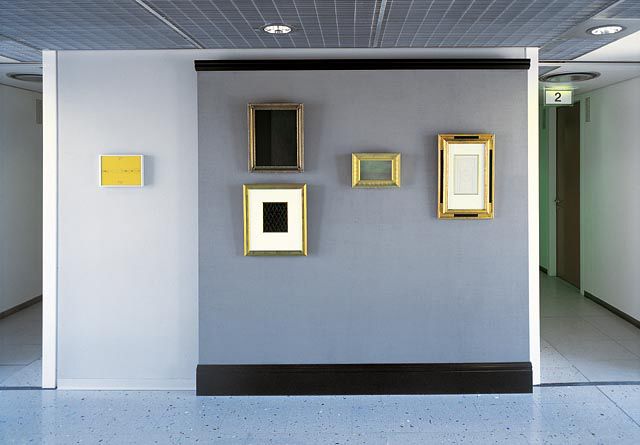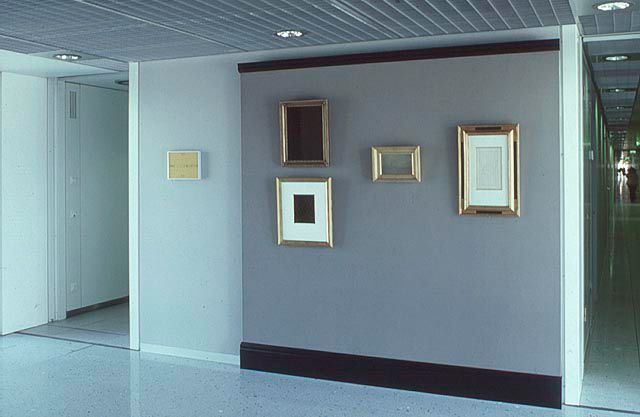Norbert Fleischmann
:
Museum
Back
Information
Norbert Fleischmann has had his piece 'Museum' mounted on a wall in the waiting area of the building housing the department for culture and science, in the St. Pölten Regierungsviertel. A grey display panel with black borders provides the support for his four gold-framed images. The artwork is located in the Niederösterreichischen Kulturdepot since january 2009.
On a wall in the waiting area of the Landhaus (Building 1, 3rd floor, Department of Culture and Science) Norbert Fleischmann had an exhibition wall in a dignified grey colour with black edge mouldings mounted that provides the frame for five of his gold-framed pictures. In the context of the sober bureaucratic architecture a section of a 'museum' is created that uses a form made up of quotations and fragments to deal with overall contexts that normally escape the casual glance. One can view the framed pictures not only as coherent elements within themselves but also as parts of an overall 'framework' in both the literal and applied sense. Here art does not end at the edge of the picture but includes the entire system of representation as a motif of the work. What normally only provides the frame for art here becomes its content. This exchange of roles reveals that there are no uninvolved neutral walls and spaces for art and artworks but that the works exhibited, the exhibition space and the surrounding social space inevitably form a partnership of convenience between interdependent components. The 'museum' illustrates this fact as it reflects the relationship between picture and frame in the relationship of the pictures to the mounted wall as well as in the relationship between the 'museum' and real space. Fleischmann addresses the interplay between work and frame, text and context by paraphrasing traditional methods of presentation and offering them for discussion. The differentiation and the drawing of a distinction between the museum zone and its profane surroundings establish a scenario of associations and references. As in this case every frame is also the internal picture of a further frame, the boundaries can be seen as joints that introduce the museum-like quality and the everyday, the aura and the reality of life not just as opposite worlds but as areas and thematic frameworks which define each other.
(Rainer Fuchs)


